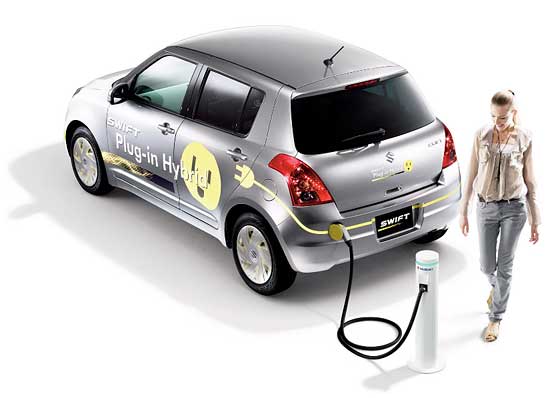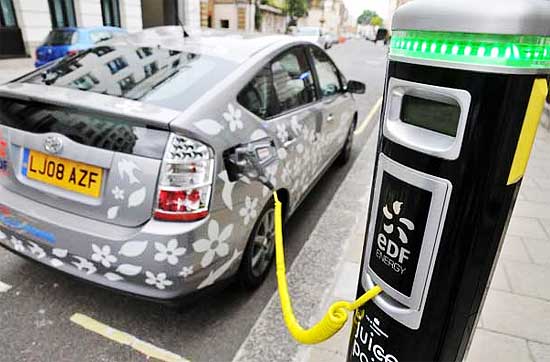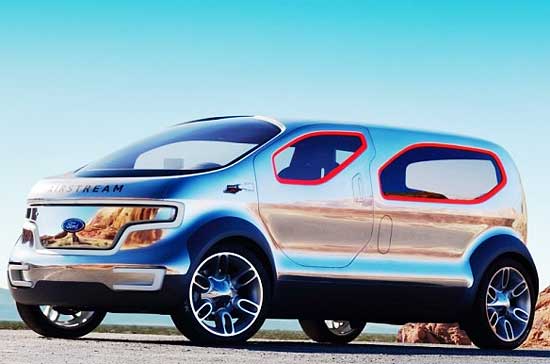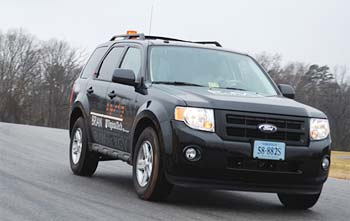I have a theory that Petrol (or diesel) plug-in hybrid electric cars will be the precursors to hydrogen plug-in electric cars which will dominate starting 20 years from now. The hurdles for hydrogen cars at this point in time are too many to gain quick public acceptance.
But plug-in cars are here now and will escalate in popularity for the next 20 years before hydrogen plug-ins start to overtake them. What petrol powered plug-ins will do for hydrogen fuel cell cars will be in laying the groundwork for future zero emission vehicles plus perhaps a few other future cars as well.

A plug-in hybrid juices up at a simple outdoor recharging station.
Plug-ins right now make up for the shortcomings of both battery electric vehicles and hydrogen cars. Plug-ins are able to travel the first x number of miles on all electricity. They are able to be charged at night when electricity rates are low for pennies. When needed for long road trips they can use their gasoline engines and refuel anywhere a regular gasoline powered car can.
Now, here is my prediction of how this will play out. Since many current and future plug-ins will get over 100 mpg, this will mean less fuel will be needed. This will mean first the gasoline prices will come down drastically, since less fuel will be consumed, but this will also mean many gas stations will be driven out of business.
With plug-in hybrids getting 4 times the gas mileage as current CAFÉ standards, this will mean only ¼ of the gas stations will be needed to accommodate these plug-in hybrid cars.
When gas stations start folding nationwide due to the conservation of fuel, this will suddenly make it tangible for the hydrogen car industry to build fewer supporting hydrogen stations or pumps. Right now, hydrogen car critics say that the same number of hydrogen fueling stations will need to be built in order replace gasoline stations if we all were to convert today.

Plug-in cars are going to be mainstreamed over the next 10 years.
Of course this number is false since hydrogen cars today get 3 times the gas mileage as current CAFÉ standards, so in essence 1/3 the number of H2 fueling stations would need to be built. But the public is largely unaware of this since hydrogen car critics have launched an effective campaign of misinformation.
But, if the public can see for themselves that gasoline fueling stations are dropping like flies because of the plug-in hybrids with gasoline range extenders, then the next logical leap would be to go from low emissions to no emissions via hydrogen cars.
And just like the demand for gasoline will drop significantly because of the plug-in aspect of the car, less hydrogen will also be needed. Critics have made outrageous predictions about how much hydrogen will be needed to support a nationwide hydrogen highway system.
But, these numbers are not accurate. In 2007, when the Chevy Volt Hydrogen plug-in hybrid concept vehicle was rolled out at the Shanghai Auto Show, it was reported to get around 75 MPGe (miles per gallon equivalent).
This means it gets around 3 times better mileage than the typical gasoline-burning car. This also means that at least 1/3 the hydrogen will need to be produced to support future vehicles. It is also reasonable to assume that with technology growing by leaps and bounds hydrogen plug-ins will be over the 100 mpge mark in just a few years, reducing the hydrogen production needs significantly.

This Ford Airstream hydrogen fuel cell plug-in hybrid shows off the future.
So, you see it’s not the battery electric car, or the hydrogen car or the ethanol or flex-fuel vehicle that is the most exciting car to come about in the past 100 years. It’s the plug-in hybrid that will shake up the Big Oil industry and set the stage for non-polluting hydrogen cars to step in and become mainstreamed for many decades to come.



